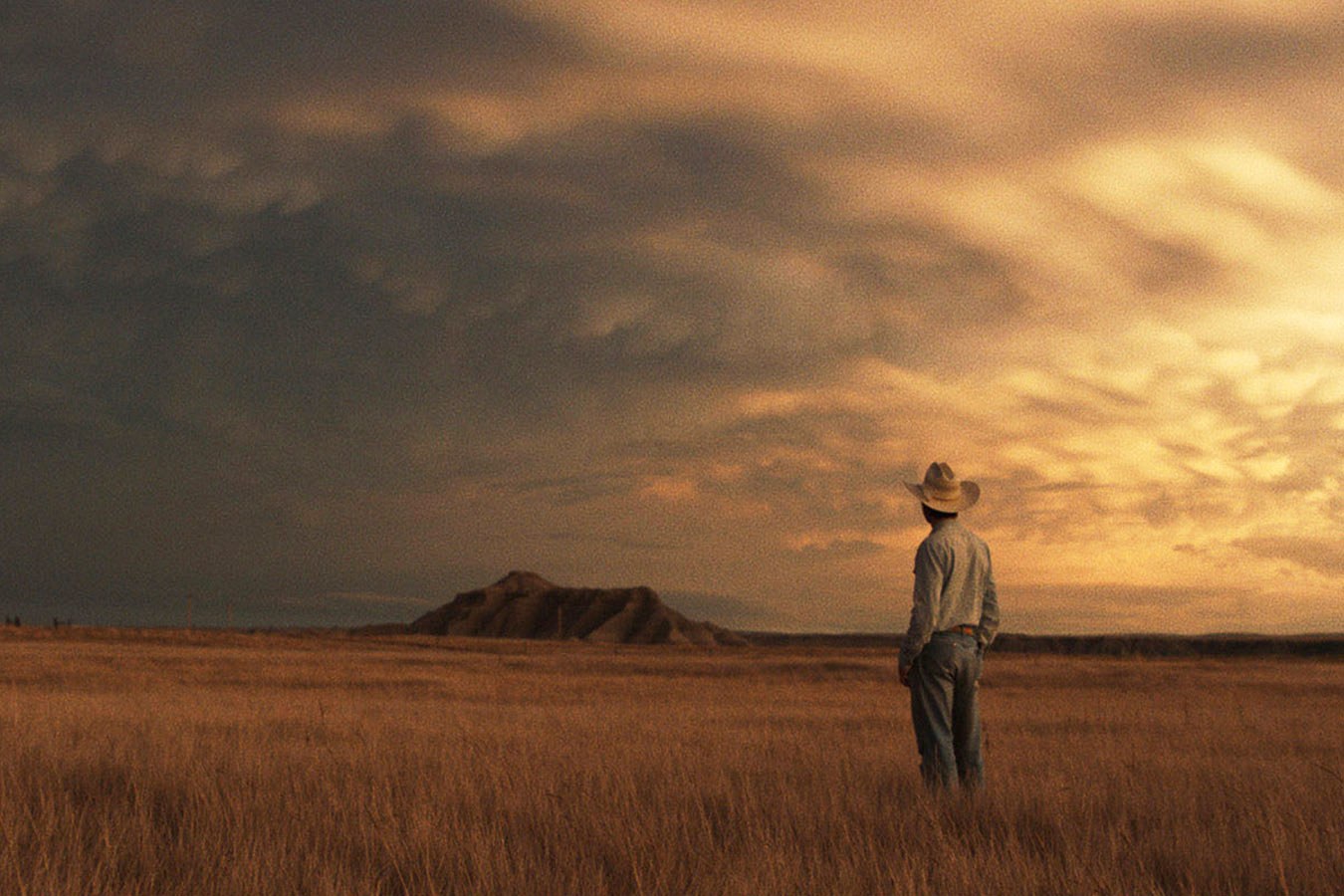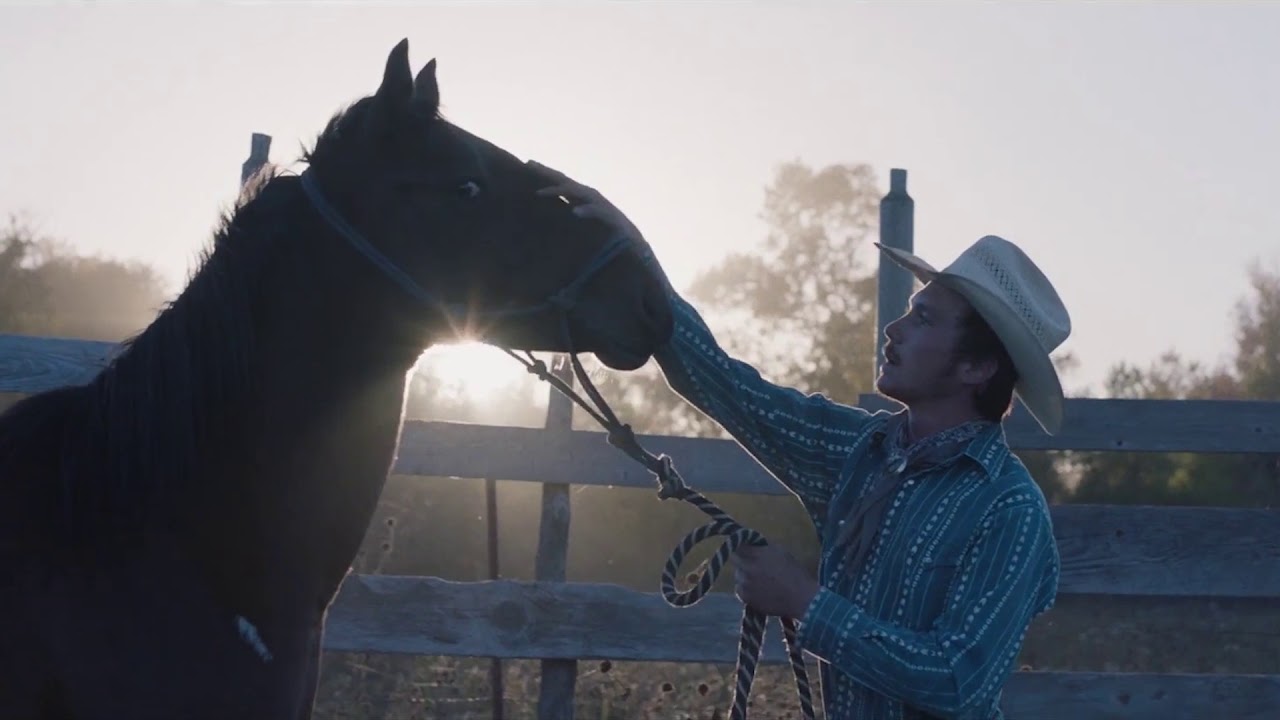Dealing with pain and depression in Chloé Zhao’s The Rider

Images cannot be more than an invitation to pay attention, to reflect, to learn, to examine.
Susan Sontag on Regarding the Pain of Others
Right on Chloé Zhao’s The Rider’s first scene the connection between the former cowboy Brady (brilliantly played by Brady Jandreau) and a rodeo horse is formed: the animal appears on the screen as a metaphor for a life that is not his anymore: because after an accident, Brady can no longer ride, he and the horse are now wandering without purpose, for the horse needs its cowboy as much as a cowboy needs his ride. And that is the story we are about to follow: a story about losing part of ourselves and how to somehow to move on.
So, Zhao opens her film in the most claustrophobic way possible by showing a close-up shot of a horse’s face in a dark room, where there is barely any light, and yet the camera lingers on its eyes and as we grow used to that shot, the image sudden changes to a close-up of Brady’s face waking up from that dream, also alone, also in a dark room. The two images are shown one after the other in a nostalgic superimposition: a life that was and the life that remains. We were inside Brady’s head and that sets the tone for the entire narrative. We follow him and his daily life and if Brady cannot do anything to change his fate, for it has already happened, neither can we. All that is left for us to do is to observe, to look and really see him beyond his talent as a rider, beyond his head injury, beyond his accident, in other words, see him by the man that is left behind all those things.
The Rider doesn’t need to show Brady before the accident or hide it to create some anticipation on the audience, for what happened to him is not a spectacle, but a tragedy and it should be shown as such. Thanks to this approach the film echoes some of the ideas developed by Susan Sontag on her book Regarding the Pain of Others, for it wants us to not only look but understand that pain is differently caused and perceived. It is impossible to be in someone else’s shoes, we can, however, show understanding and respect for the pain that is the others’.
What matters here is that Brady can never ride again, yet riding was the thing that gave him his life’s purpose. His injury, then, could’ve come from a million different reasons because what concerns Zhao’s narrative is how a character like Brady will keep on living without his life’s purpose. It is cruel to see him getting reminded by every person he encounters that he should not give up, that a rider rides through the pain; Brady’s condition is a parallel to how society deals, for example, with depression and other mental issues. How many times people are asked to just “try harder”? One does not have control over his or her depression and other mental issues, and the reason behind these conditions are many. It is a clinical condition that requires medical treatment, just like Brady’s impossibility to ride again: it is not a matter of trying any harder, his brain is injured and that is that.
Brady tries to move on with his life, but this is a small town, everyone knows everyone, and he was not only one of the best cowboys but great with horses as well. The city and every person in it act like a trigger for his pain of not being able to ride a horse anymore, so for that he is just like a horse that after a bad injury has no hopes for recovering and answering the question that my mind kept remembering from Horace McCoy’s novel and its screen adaptation directed by Sydney Pollack “They shoot horses, don’t they?”: Yes, they do mercy kill horse That is exactly what this environment seems to be doing with Brady: mercy killing him. Little by little, by demanding him to be not Brady, not who he is now, but the glorious cowboy he once was.

He is not alone and at some deep level, he knows that. In a scene, he’s getting a tattoo honoring a friend, Lane Scott (himself) who like him had a riding accident, however, he ended up not only unable to ride but unable to even walk or even speak. Those two narratives are put side to side, those two men are facing body limitations they didn’t ask for and it is up for them to find a way and a reason to keep living. Brady has his beloved sister, Lilly (Lilly Jandreau) who needs constant care, so every job he takes, despite knowing that he will meet someone who will ask him why he is not riding anymore, he does it for her. To have money to buy her things, and to take care of her.
The Rider could’ve easily ended up being too melodramatic or exploitive but Zhao’s talent prevents it from being both of those things. She lets the actors’ bodies speak. She shoots them up close and shows their scars, their shapes, and problems. There is no revelation to be made, no spectacle on how to show a disabled body. They simply are the way they are and that is how they should be shown on screen. Brady, Lilly, and Lane speak for themselves, for it is their narratives. One of the most moving moments comes exactly because of that: Brady is helping Lane in rehab and they don’t speak much about anything. Brady uses an exercise that mimics riding, and, at that moment, they can be just boys, just best friends who share a passion for horses and riding. And that is when cinema succeeds: when things are shown, without the need to be spoken out loud. And yet, when it let people be the main characters of their own life narratives.
Post a comment